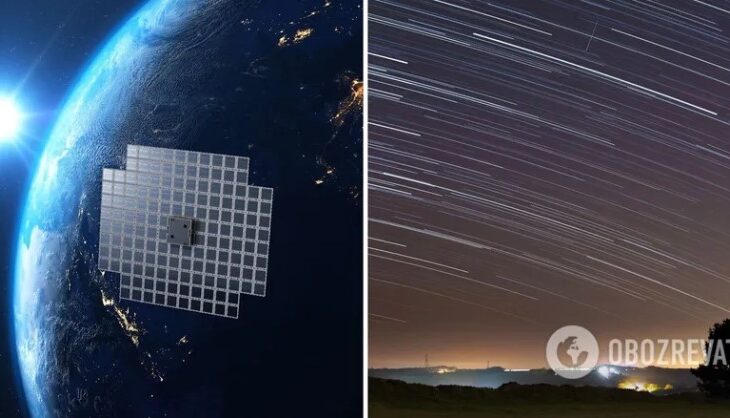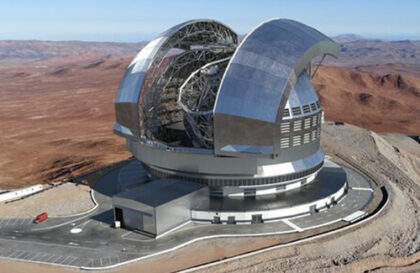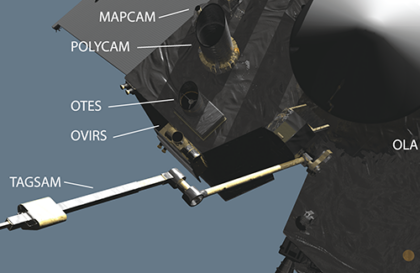One of the brightest objects in the night sky is not a star or planet but a communications satellite. New “stars” will appear behind it.
The BlueWalker 3 satellite, launched in 2022, became the eighth-largest object in the sky and the prototype for AST SpaceMobile’s future constellation of 150 BlueBird satellites. Its brightness is due to the reflection of the sun’s rays by massive panels with an area of 692 square meters. Feet is of concern to astronomers because it interferes with star observation. This satellite measures over 26 feet (about 8 meters) on each side when deployed.
The massive solar array that powers BlueWalker 3 reflects enough sunlight to outshine some of the brightest stars in the night sky, including nearby Procyon. Credit: AST SPACEMOBILE
AST SpaceMobile plans to launch 25 BlueBird satellites by the end of 2024. This means 25 super-bright objects will appear in the night sky. With the proliferation of communications constellations such as Amazon’s Project Kuiper (3,200 satellites) and SpaceX’s StarLink (more than 5,000 satellites already flying), astronomers face challenges in observing space due to satellite light, infrared, and radio frequency pollution.
Meanwhile, light pollution increases by 10% every year. The study, presented in January 2023, suggests that within a generation or two, most people worldwide may lose the ability to observe the stars when looking up at a light-lit sky.
What is BlueWalker 3?
BW3 is a commercial communications array located in low Earth orbit. It is designed to communicate directly with cellular devices at 5G speeds. Its area is 693 sq. ft (64 sq. m.). The field of view is more than 300,000 square miles (more than 777,000 sq. km) of the Earth’s surface.
How bright is it?
Astronomers have found that BlueWalker 3 periodically glows as brightly as 99% of stars, sometimes becoming one of the ten brightest objects in the night sky. Its apparent brightness fluctuates due to its rotation: after fading in late December 2022, it became brightly visible in April 2023, reaching magnitude +0.4, the progressive brightness of some of the brightest stars in the sky, such as Procyon and Achernar (8th and 9th brightest stars in the sky of the Northern Hemisphere).
Like other satellites, BlueWalker 3 leaves a visible trail in time-exposure images. Here, you see the satellite’s trail over the McMath–Pierce Solar Telescope at Kitt Peak National Observatory in Arizona. Credit: KPNO/ NOIRLab/ IAU/ SKAO/ NSF/ AURA/ R. Sparks
The satellite’s position can be found by visiting Heavens-Above.com.
Astronomers place radio telescopes in remote locations to minimize exposure to communications radiation. Satellites such as BlueWalker 3 can make matters worse even in “radio quiet zones.” This jeopardizes the ability to do science.
Statement from AST SpaceMobile
Dave Mosher from AST SpaceMobile contacted EarthSky a year ago with a statement that:
- AST SpaceMobile’s mission is to help solve the major global problem of lack of connectivity affecting billions of people worldwide.
- It is committed to using the latest technologies and strategies to mitigate potential impacts on astronomy.
- She works with industry experts on the latest innovations, including next-generation anti-reflective materials.
As part of this effort, AST SpaceMobile is committed to avoiding broadcasting in or near the US National Radio Quiet Zone and other radio astronomy sites that are important to astronomy.
While other constellations may require thousands of satellites (there could be as many as 58,000 in orbit by 2030, according to a recent US government report), we plan to provide significant global coverage with a network of 168 satellites or fewer.
Banner image: Leaf Space/Getty/collage OBOZREVATEL
Image credit:
https://eng.obozrevatel.com
https://www.inverse.com
https://earthsky.org






